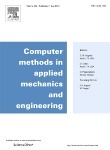Journal


Computer Methods in Applied Mechanics and Engineering
Archives Papers: 2,043
Elsevier
Please choose volume & issue:
-
Data-driven and physics-based modelling of process behaviour and deposit geometry for friction surfacing
Keywords:Machine learning;Feature selection;Numerical modelling;Heat transfer;Design of experiments;Explainable AIAbstracts:In the last decades, there has been an increase in the number of successful machine learning models that have served as a key to identifying and using linkages within the process-structure–property-performance chain for vastly different problems in the domains of materials mechanics. The consideration of physical laws in data-driven modelling has recently been shown to enable enhanced prediction performance and generalization while requiring less data than either physics-based or data-driven modelling approaches independently. In this contribution, we introduce a simulation-assisted machine learning framework applied to the solid-state layer deposition technique friction surfacing, suitable for solid-state additive manufacturing as well as repair or coating applications. The objective of the present study is to use machine learning algorithms to predict and analyse the influence of process parameters and environmental variables, i.e. substrate and backing material properties, on process behaviour and deposit geometry. The effects of maximum process temperatures supplied by a numerical heat transfer model on the predictions of the targets are given special attention. Numerous different machine learning algorithms are implemented, optimized and evaluated to take advantage of their varied capabilities and to choose the optimal one for each target and the provided data. Furthermore, the input feature dependence for each prediction target is evaluated using game-theory related Shapley Additive Explanation values. The experimental data set consists of two separate experimental design spaces, one for varying process parameters and the other for varying substrate and backing material properties, which allowed to keep the experimental effort to a minimum. The aim was to also represent the cross parameter space between the two independent spaces in the predictive model, which was accomplished and resulted in an approximately 44 % reduction in the number of experiments when compared to carrying out an experimental design that included both spaces.
-
A novel numerical manifold method and its application in parameterized LSM-based structural topology optimization
Keywords:Numerical manifold method;Parameterized level set method;Topology optimization;Complex design domainAbstracts:In this paper, a high-efficiency structural topology optimization framework based on combination of numerical manifold method (NMM) and parameterized level set method (PLSM) is established. The NMM uses two cover systems to discretize the model, which can accurately represent the complex boundary of the design domain. A new numerical manifold element has been derived for the application of NMM in PLSM-based optimization. To obtain enhanced accuracy for structural analysis, a multilevel subdivision technique for numerical manifold element generation is presented, and the related numerical integration scheme coupled with the interpolation point selection strategy is provided. For the proposed topology optimization, the new update method of element stiffness matrix is exclusively formulated as well as the calculation method of volume fraction. Some representative structural optimization problems demonstrate that the proposed structural topology optimization method is very effective for two-dimensional (2D) and three-dimensional (3D) structural topology optimization problems.
-
High-order composite implicit time integration schemes based on rational approximations for elastodynamics
Keywords:Composite time integration;High-order method;Implicit time integration;Numerical dissipation;Structural dynamics;Wave propagationAbstracts:A new approach for developing implicit composite time integration schemes is established starting with rational approximations of the matrix exponential in the solution of the equations of motion. The rational approximations are designed to have the same effective stiffness matrix in all sub-steps. An efficient algorithm is devised so that the implicit equation for a sub-step is in the same form as that of the trapezoidal method. The proposed M-schemes are Mth order accurate using M sub-steps. The amount of numerical dissipation is controlled by a user-specified parameter ρ∞. The (M+1)-schemes that are (M+1)th order accurate using M sub-steps can also be constructed, but the amount of numerical dissipation is built in the schemes and not adjustable. The order of accuracy of all the schemes is not affected by external forces and physical damping. Numerical examples demonstrate that the proposed high-order composite schemes are effective for introducing numerical dissipation and allow the use of large time step sizes in wave propagation problems. The source code written in MATLAB is available for download at: https://github.com/ChongminSong/CompsiteTimeIntegration .
-
Topology optimization of compliant mechanisms under transient thermal conditions
Keywords:Topology optimization;Finite strain thermo-hyperelasticity;Transients;Multi-material;Compliant mechanisms;Thermally actuated devicesAbstracts:This work considers multi-material topology optimization of compliant mechanisms under transient thermal and quasi-static mechanical conditions wherein thermally actuated devices are optimized for different operating conditions. The materials are modeled using finite strain thermo-hyperelasticity and a two way coupling between the energy balance and equilibrium equations is investigated. The design updates are generated from the gradient-based method of moving asymptotes optimizer and the sensitivities are computed using the time dependent adjoint sensitivity analysis. Results show the impact of designing for short versus long actuation times.
-
Surface tension effect on flexoelectric energy harvesting based on extended isogeometric analysis
Keywords:Flexoelectricity;XIGA;Liquid inclusion;Surface tension;Length scaleAbstracts:This study presents a numerical framework to model the effect of surface tension on a flexoelectric energy harvesting system with liquid inclusions. The equivalent Young’s modulus and Poisson’s ratio of the liquid inclusions embedded in flexoelectric composites considering the surface tension are derived for the first time. An extended isogeometric analysis (XIGA) based on non-uniform rational B-splines (NURBS) is developed to model and solve the electromechanical response of weak discontinuities in flexoelectric composites. The interface between liquid and solid materials is implicitly represented by the level set method. Several numerical examples are presented as linear dielectric solids embedded with liquid inclusions under mechanical compression and different electric circuit configurations, including square matrixes and truncated pyramids. The simulation results indicate that a significant enhancement in the electromechanical coupling coefficient can be obtained by considering the effect of surface tension in open- and closed-circuit configurations. The maximum electric potential and energy conversion are higher in the open-circuit configuration. In addition, the XIGA simulation shows that the energy conversion of the flexoelectric devices increases as the size of the structural system and Young’s modulus of the flexoelectric material decrease. The maximum energy conversion capability of the flexoelectric composite, including the effect of surface tension, is enhanced by 32.4% with a central inclusion and 57% or higher with random inclusions. Finally, the influence of the length scale on the flexoelectricity is analyzed.
-
A shallow physics-informed neural network for solving partial differential equations on static and evolving surfaces
Keywords:Physics-informed neural networks;Surface partial differential equations;Laplace–Beltrami operator;Shallow neural network;Evolving surfacesAbstracts:In this paper, we introduce a shallow (one-hidden-layer) physics-informed neural network (PINN) for solving partial differential equations on static and evolving surfaces. For the static surface case, with the aid of a level set function, the surface normal and mean curvature used in the surface differential expressions can be computed easily. So, instead of imposing the normal extension constraints used in literature, we write the surface differential operators in the form of traditional Cartesian differential operators and use them in the loss function directly. We demonstrate a series of performance study for the present methodology by solving Laplace–Beltrami equations and surface diffusion equations on complex static surfaces. With just a moderate number of neurons used in the hidden layer, we are able to attain satisfactory prediction results. We then extend the present methodology to solve the advection–diffusion equation on an evolving surface with a given velocity. To track the deforming surface, we additionally introduce a network, in which a prescribed hidden layer is employed to enforce the topological structure of the surface and learn the homeomorphism between the surface and the prescribed topology. The proposed network structure is designed to track the surface and solve the equation simultaneously. Again, the numerical results show comparable accuracy as the static cases. As an application, we simulate surfactant transportation on a droplet surface under shear flow and obtain some physically plausible results.
-
A sequential inverse approach for draping simulations of woven fabrics with anisotropic hyperelastic behavior laws
Keywords:One-step;Inverse approach;Woven fabric;Hyperelastic;Initial solution estimationAbstracts:Simulations of the draping of woven fabrics for the manufacturing of composite parts with complex geometries rely on either the geometrical method, which does not consider the shearing stresses and the external forces, or incremental finite element analyses, which require substantial CPU times. In this study, the one-step finite element method, also referred as the inverse approach in the literature, commonly used for sheet metal forming, is adapted to the woven fabric draping. The main issue of one-step simulations is the convergence of the Newton–Raphson scheme, which relies on an appropriate initial solution estimation. This problem is addressed by a sequential initial solution estimation, based on successive sub-problems with increasing difficulty up to the actual one. Applications of the proposed method on elementary test cases show fast and robust convergence, with CPU times comparable to those of the geometrical method. The proposed method is able to predict the influence of external forces and material hyperelastic mechanical behavior laws on the strain components of interest of woven fabrics, such as the shearing angles between yarns and the yarn elongations.
-
Lagrangian Voronoï meshes and particle dynamics with shocks
Keywords:65M08;51M20;76M12;Moving Voronoï meshes;Particle dynamics;ShocksAbstracts:We present a new first order particle method on lagrangian and moving Voronoï meshes for the numerical simulation of compressible flows with shocks and internal interfaces between different gas. The method is based on the closed form formula of the partial derivative of the volume of Voronoï cells with respect to the generators. The mathematical proof of the formula seems original with respect to the literature. A corollary is that the volume of Voronoï cells is generically of class C1 with respect to the generators. The final scheme is conservative in local mass, total momentum and total energy, and it is endowed with an entropy inequality which insures the correctness of shocks calculations. Numerical illustrations in dimension d=2 are displayed for basic problems on coarse meshes. The implementation developed to obtain the numerical illustrations uses a freely available library for the generation of the Voronoï cells at all time steps.
-
Surrogate-accelerated Bayesian framework for high-temperature thermal diffusivity characterization
Keywords:Uncertainty quantification;Bayesian;Polynomial Chaos surrogate modeling;No-U-turn sampler;High temperature thermal diffusivityAbstracts:Precise determination of thermal diffusivity at high temperatures is crucial for aerospace and energy industries. Periodic heating techniques such as Å ngström’s method are data-rich and commonly used for measuring thermal diffusivity of a solid material. In previous Å ngström’s method studies, regression techniques have been used to solve the associated inverse problem and to estimate thermal diffusivity by minimizing the residual between measurements and model predictions. This approach lacks rigorous uncertainty quantification and does not allow incorporation of prior knowledge for parameters. Adopting a Bayesian framework addresses these issues; however, probing the Bayesian posterior distribution is prohibitively expensive using Markov chain Monte Carlo (MCMC) methods, especially when the physical model is computationally expensive, as in the present study for which an analytical solution does not exist. This study employs a parametric surrogate model in the form of polynomial chaos to accelerate the physical model by several orders of magnitude to support Bayesian analysis. Moreover, high-temperature testing environments are difficult to control precisely, and many unknown parameters exist beyond the quantity of interest. Previous studies have employed random walks to set new parameters in the MCMC sampling process. However, random walks are inefficient in exploring high-dimensional parameter spaces and thus suffer high auto-correlation and poor convergence. To improve the efficiency of the MCMC sampler, this study employs a No-U-Turn sampler that explores the parameter space thoroughly and efficiently. We demonstrate the effectiveness of this Bayesian framework by analyzing experimental results on a graphite sample at approximately 1000 K.
-
An efficient monolithic multiscale numerical manifold model for fully coupled nonlinear saturated porous media
Keywords:Multiscale theory;Monolithic solution;Hydro-mechanical analysis;Heterogeneous porous media;Numerical manifold methodAbstracts:This paper presents an efficient monolithic computational homogenization model for transient nonlinear hydro-mechanical analysis within the framework of Numerical Manifold Method (NMM). The proposed model is on the same theoretical basis as the FE2 method. The scale transitions are achieved through the extended Hill-Mandel theorem so that the microscopic fluid and solid dynamic effects are fully incorporated. The two-scale simulations are solved in a monolithic manner and the microscopic problems of all macroscopic integration points are decoupled from each other to prevent size of the system of equations from soaring to exceedingly large. By conveying microscale unbalanced forces and tangent operators to the macroscale level, the micro- and macroscale problems are solved in the same Newton loop such that unnecessary microscopic iterations based on estimated macroscopic variables in the conventional nested homogenization m are avoided. By solving benchmark numerical examples, the proposed model proves to be capable of capturing transient hydro-mechanical responses accurately. Moreover, in contrast to the conventional nested homogenization model, the proposed model saves around 40% of computational costs for nonlinear hydro-mechanical analysis. Using the framework of numerical manifold, the presented model can be easily extended to multiscale analyses involving complex boundaries, interfaces and fractures.
Hot Journals
- Risk Breakdown Matrix for Risk-Based Inspection of Transportation Infrastructure Projects
- Social Control in Outsourced Architectural and Engineering Design Consulting Projects: Behavioral Consequences and Motivational Mechanism
- 2022 Best Paper Award
- Hold-Ups and Failures in Negotiated Order: Unearthing the Nuances of Rework Causation in Construction
- Prevalence and Risk Factors for Poor Mental Health and Suicidal Ideation in the Nigerian Construction Industry
- Impact of Wind Load Characteristics on Computed Bridge Stay-Cable Forces Used for Bridge Health Monitoring
- Weak-End and Frequency Detection of Elastically Supported Bridges by Contact Residual Response of Two-Axle Test Vehicle in a Round Trip
- Development of Performance-Based Fragility Curves of Coastal Bridges Subjected to Extreme Wave-Induced Loads
- An Analytical Model to Evaluate Short- and Long-Term Performances of Post-Tensioned Concrete Box-Girder Bridges Rehabilitated by an Ultrahigh-Performance Concrete Overlay
- Experimental and Numerical Studies on Dynamic Response of Parallel Wire Cables Subjected to Close-In Explosions
- Three-Dimensional Velocity Distribution in Straight Smooth Channels Modeled by Modified Log-Law
- Experimental Investigation on Flow Past Two and Three Side-by-Side Inclined Cylinders
- An Experimental Investigation of Rotor–Box Aerodynamic Interaction 1
- Modeling Gas–Liquid Flow Between Rotating and Nonrotating Annular Disks
- Entry Length Requirements for Two- and Three-Dimensional Laminar Couette–Poiseuille Flows
Acta Astronautica (1,768)
- Mixed-integer trajectory optimization with no-fly zone constraints for a hypersonic vehicle
- Adaptive control design for active Pogo suppression of large strap-on liquid launch vehicles
- Machine learning based approach for modeling and forecasting of GPS–TEC during diverse solar phase periods
- Effect of two-dimensional micro-cavity surface on hypersonic boundary layer
- Investigation on burning behaviors of aluminum agglomerates in solid rocket motor with detailed combustion model
Advanced Materials (3,745)
- Structured Perovskite Light Absorbers for Efficient and Stable Photovoltaics
- Strategies for High‐Performance Solid‐State Triplet–Triplet‐Annihilation‐Based Photon Upconversion
- Atomic Engineering Catalyzed MnO2 Electrolysis Kinetics for a Hybrid Aqueous Battery with High Power and Energy Density
- Crystal Adaptronics: Global Performance Indices for Dynamic Crystals as Organic Thermal Actuators (Adv. Mater. 20/2020)
- Enlightening Materials with Photoswitches








 User Center
User Center My Training Class
My Training Class Feedback
Feedback





